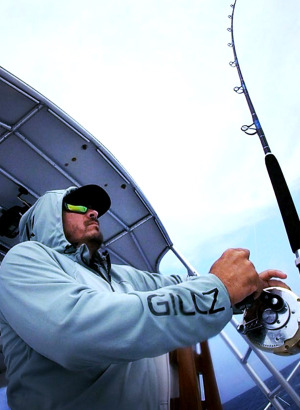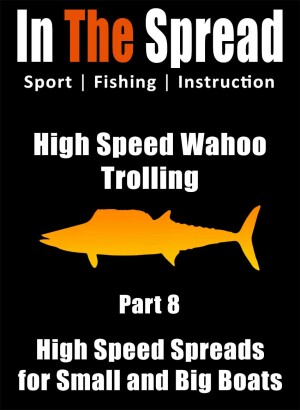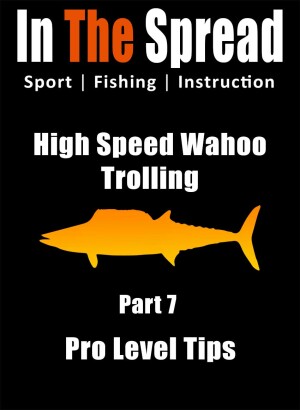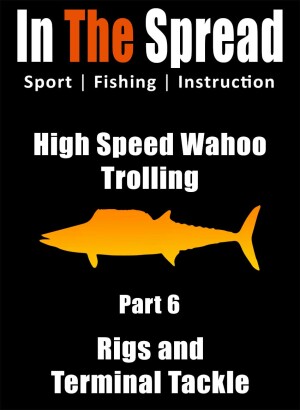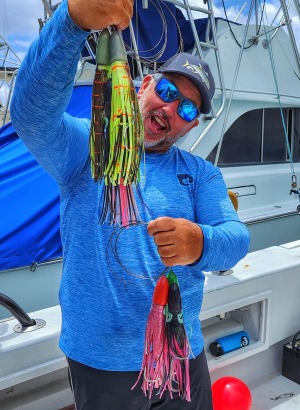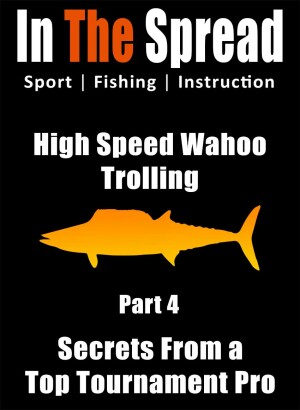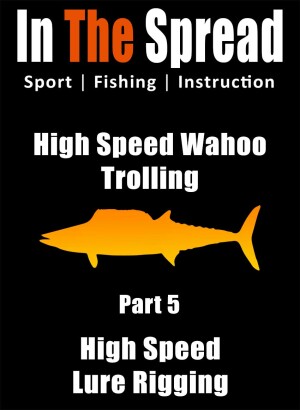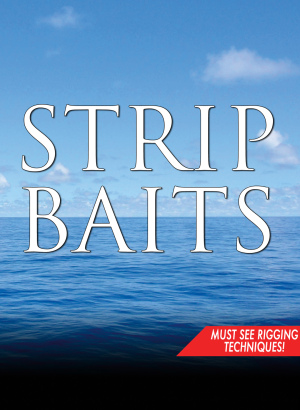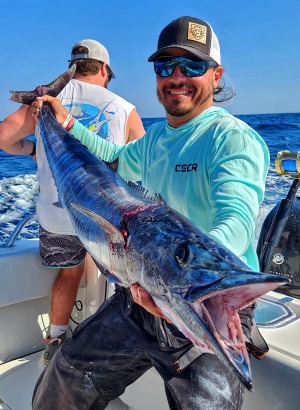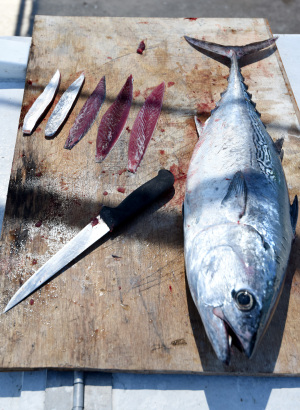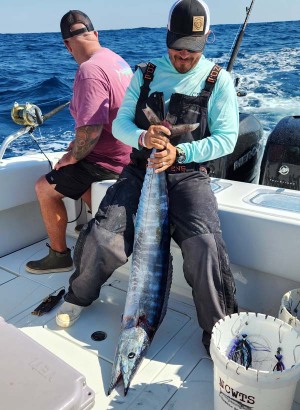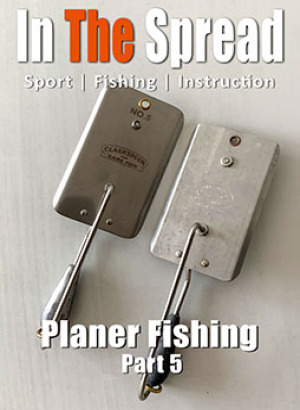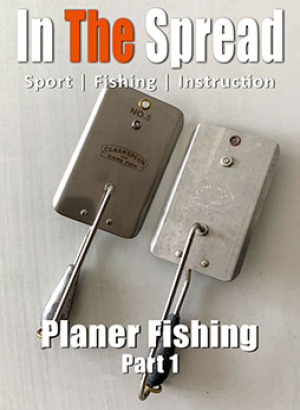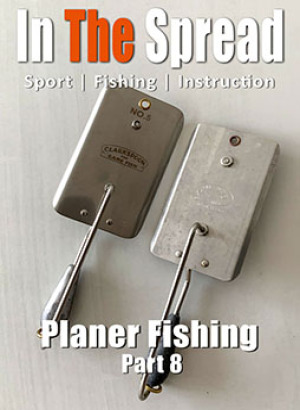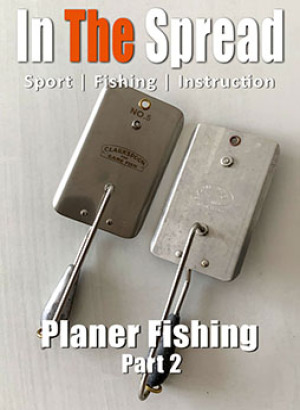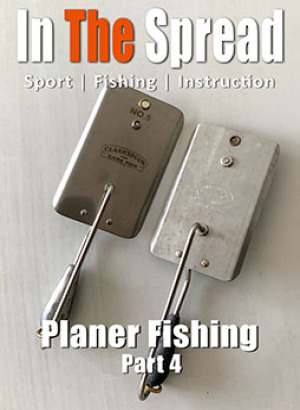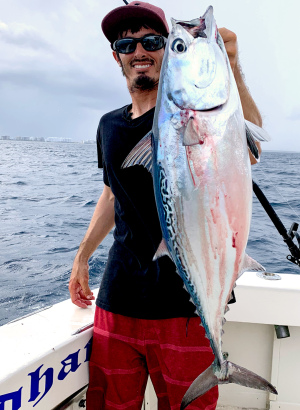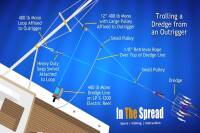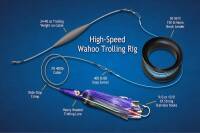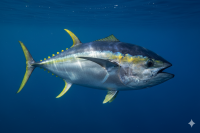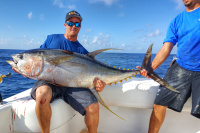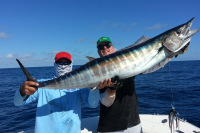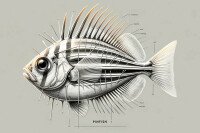Successful wahoo fishing depends on matching the right bait to your location and conditions. From live speedos in the Florida Keys to ballyhoo offshore, each bait requires specific rigging and presentation techniques. Wire leaders, stinger hooks, and getting baits to the correct depth make the difference between blank days and explosive action with these razor-toothed speedsters.

Best Wahoo Baits
Best Wahoo Baits: Live, Dead & Rigging Techniques
Wahoo fish (Acanthocybium solandri) are among the most prized game fish in offshore waters, renowned for their blistering speed, aggressive strikes, and delectable meat. These ocean speedsters can reach up to 60 mph, making them one of the fastest fish in the sea and creating unforgettable battles for anglers lucky enough to hook one. This comprehensive guide covers everything you need to know about wahoo baits and techniques to improve your chances of landing these magnificent predators.
Understanding Wahoo Fish Behavior
Before diving into specific baits and rigs, it's essential to understand wahoo behavior. These sleek, powerful fish are migratory and adapt to varying conditions. Knowing how and where wahoo hunt puts you in a better position to catch them.
- Underwater wrecks and artificial reefs
- Deep drops and ledges
- Temperature breaks
- Current edges
- Floating debris and weed lines
- Oil platforms and seamounts
Even in relatively shallow water (as little as 90 feet), wahoo can be present if there's a good food source. They're known to suspend in the water column beneath schools of bonito and other baitfish. Their feeding patterns are often tied to tidal changes, moon phases, and light transitions, with dawn and dusk being prime times.
One caveat: just finding bait may not guarantee action. Wahoo are finicky and usually eat when the tides are moving. Even way offshore, where tides seem insignificant, there's still something about a transition period that triggers a wahoo bite. Tides are especially crucial when fishing for wahoo close to shore. There are also peak activity periods just prior to sunrise to early post-dawn. Wahoo have a habit of feeding during this time. The bite might last only 30 to 45 minutes, but it's aggressive.
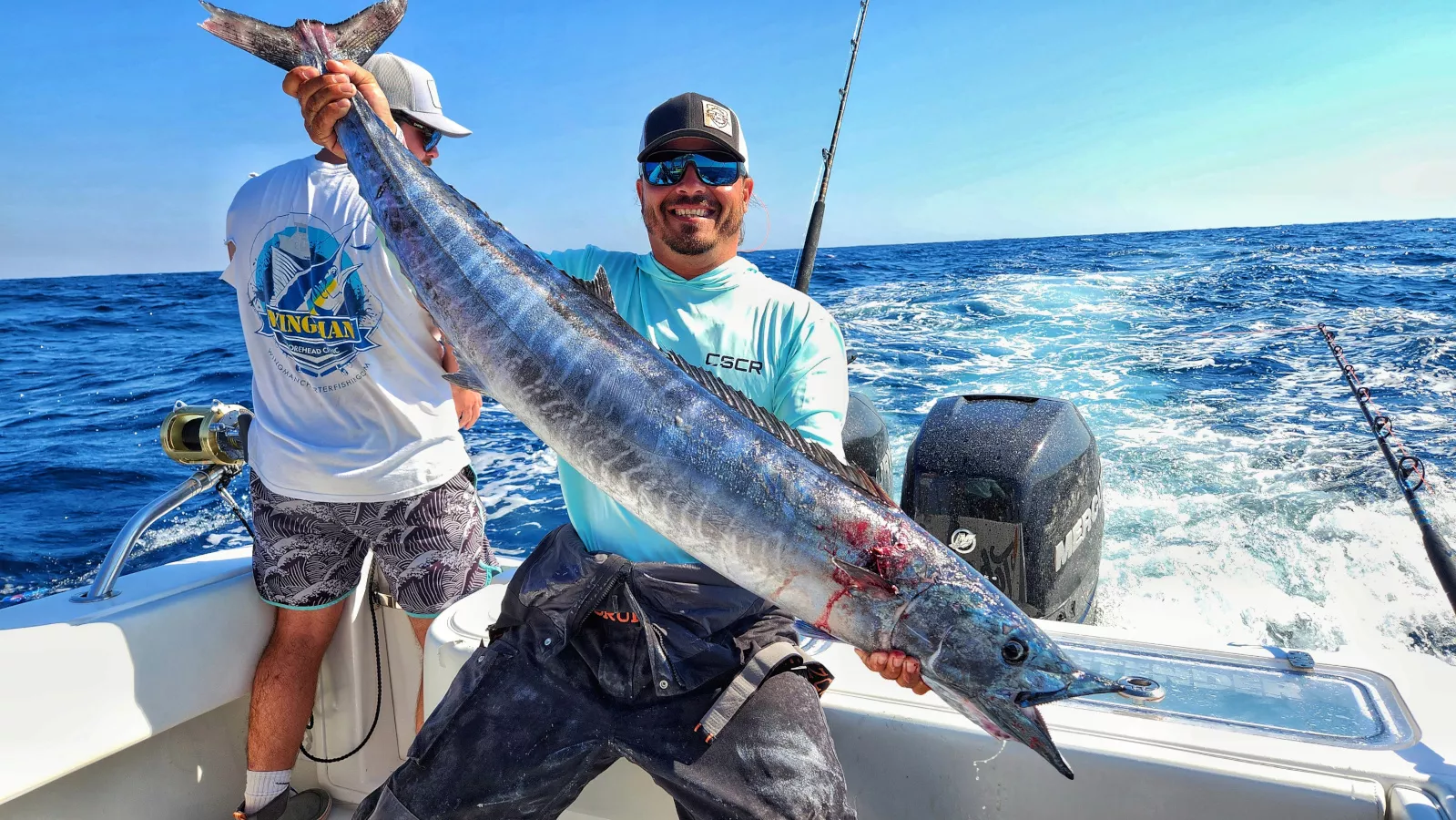
Best Baits for Wahoo Fishing
Live Bait for Wahoo
When it comes to live baiting for wahoo, certain baitfish consistently outperform others. The effectiveness of different live baits varies by region:
North Carolina
- Blue Runners: Hardy and widely used for trolling
- Blackfin Tuna: Often school in the same areas wahoo frequently hunt
- Bonito: Durable and effective for attracting wahoo
Florida
- Blue Runners: Popular due to their availability and resilience
- Goggle-Eyes: Known for their active swimming, especially in the Keys
- Speedos (Mackerel Scad): Excellent bait, particularly in the Middle Florida Keys
Louisiana & Upper Gulf of Mexico
- Cigar Minnows: A top choice for live bait trolling in the Gulf
- Hardtails (Blue Runners): Reliable and durable for slow trolling
The Bahamas
- Goggle Eyes: Liveliness for long periods make them ideal for slow trolling
- Speedos: Fast, erratic swimmers, which trigger predatory strikes from wahoo.
- Blue Runners: Highly durable able to withstand the stress of trolling
- Bonito: Effective for trolling near offshore structures
Hawaii
- Aku (Skipjack Tuna): A premium live bait for Hawaiian waters
- Opelu (Mackerel Scad): Abundant and highly attractive to wahoo
- Goggle-Eyes and Ballyhoo: Also frequently used in Hawaiian waters
Costa Rica
- Bonito: Extremely effective when rigged with stinger hooks to prevent short strikes
- Blue Runners: Reliable option, especially near offshore drop-offs and seamounts
Other effective live wahoo baits include:
- Frigate mackerel
- Small little tunny
- Albacore
- Skipjack
- Pogies (menhaden)
- Pilchards
- Croakers
- Threadfin Herring
When using live bait, proper handling is critical. Stressed baitfish won't swim naturally, and wahoo can detect the difference. Maintain a well-oxygenated livewell with adequate space, and handle your bait with care. Healthy, frisky live bait dramatically increases your chances of enticing wahoo to strike.
Understanding Live Bait Characteristics
The characteristics of different live baits significantly influence their effectiveness for wahoo fishing:
- Larger Baits (bonito, blackfin, skipjack tuna): Attract larger wahoo, mimic natural prey size, but may be more challenging to keep alive
- Smaller Baits (speedos, goggle-eyes, blue runners): Easier to keep alive, versatile for various wahoo sizes, but may attract smaller wahoo
Swimming Behavior
- Strong Swimmers (blue runners, goggle-eyes): Create more vibration and visual stimuli, attract wahoo from greater distances
- Erratic Swimmers (mackerel scad, speedos): Mimic injured prey, trigger predatory instincts
Durability
- Hardy Baits (blue runners, bonito): Withstand the stress of trolling, remain lively for extended periods
- Delicate Baits (threadfin herring, cigar minnows): Require careful handling but offer natural presentation
Scent and Oil Content
- Oily Fish (mackerel, bonito): Produce stronger scent trails that attract wahoo from greater distances
Color and Visibility
- Flashy or Reflective Baits (speedos, pilchards, goggle-eyes): Stand out in clear water conditions
- Dark-colored Baits (blue runners, bonito): Create strong silhouettes against surface light
Impact of Water Conditions on Bait Selection
Different live baits perform better under specific water conditions:
- Best Baits: Blue runners, goggle-eyes, and speedos
- Why: Their flashy appearance and active swimming are highly visible
Murky Water
- Best Baits: Bonito, little tunny, and scad
- Why: These emit stronger vibrations detectable by wahoo's lateral line system
Strong Currents
- Best Baits: Bonito, frigate mackerel, and blue runners
- Why: These hardy baits can swim actively against strong currents
Choppy Seas
- Best Baits: Speedos and blue runners
- Why: Their erratic swimming in rough waters mimics distressed prey
The Importance of Bait Movement
The movement or action of live baits is critical in attracting wahoo:
- Erratic Movement: Baits like goggle eyes and speedos that exhibit darting, unpredictable swimming patterns mimic injured prey
- Vibrational Cues: Active swimmers like blue runners create water vibrations detected by wahoo's lateral line
- Speed and Agility: Fast-swimming baits like frigate mackerel match wahoo's speed-based hunting style
- Natural Swimming Patterns: Properly rigged bait maintains smooth, lifelike motion without spinning
Dead Baits and Strip Baits
Strip baits are a standard on many charter boats because they're easy to store in quantity. Bonito strips are particularly effective, as is dolphin belly. For maximum effectiveness, skirt your dead baits with a sea witch or lure skirt.
Some anglers prefer speedo cross-sections cut about an inch wide, as they look more natural than simple chunks of meat - like something that's been bitten in half. When fishing chunks, try throwing several unhooked pieces in the water before casting your hooked bait, which can make wahoo less wary of the wire and leader.
- Natural appearance and action when rigged properly
- Versatility in rigging options (whole or strips)
- Strong scent and oil content
- Wide availability in frozen form
- Durability when trolled at medium speeds
- Excellent compatibility with skirts and lures
Other effective dead baits include:
- Bonito strips (known for durability and strong scent)
- Flying fish (effective due to their natural profile)
- Squid (versatile when rigged with skirts)
- Tuna belly strips (highly durable and oily)
Wahoo Rigs: Setting Up for Success
Proper rigging is crucial when targeting these toothy predators. Wire leaders are almost always necessary due to the wahoo's razor-sharp teeth.
For bait fishing, use single-strand wire (stainless steel wire from Malin or AFW) connected to the hook with a haywire twist. On the other end, even a small barrel swivel can handle fish up to 100 pounds. Prepare about a dozen or two rigs in advance, as bites often come in quick succession, and wire tends to get bent during fights. If you go with piano wire, replace your wire and hook after each fight to ensure strength and maintain a straight wire for the stealthiest presentation. The stainless wire is reusable, unless it kinks. See our video on Ballyhoo Wahoo Rigs for Slow Trolling where Captain Mike Dupree details the use of wire.
Stinger Rigs for Wahoo
Stinger rigs with treble hooks are particularly effective for wahoo fishing. Experience shows that wahoo strikes often result in fish being hooked on the treble hook rather than the J-hook. The J-hook frequently serves primarily as a bait carrier, while the treble hook does the heavy lifting.
There are an infinite number of ways to rig wahoo baits. With live baits, you can put a live bait hook through the roof of the fish's mouth, through the nose, bridle the bait, hook it in the back, add a stinger hook or two, or any other combination that works. How big your bait is does factor into your choices. Since wahoo have a tendency to slash the back half of a bait, the larger the bait, the greater the need for a stinger rig.
Common Mistakes When Using Live Bait for Wahoo
When using live bait for wahoo fishing, anglers often make mistakes that reduce their chances of success:
- Improper Rigging: Incorrectly rigged live bait can spin unnaturally, deterring wahoo from striking
- Using Dead or Weak Bait: Live bait must be lively and vigorous to attract wahoo
2. Neglecting Wire Leaders
- Using Monofilament or Fluorocarbon Leaders: Wahoo have razor-sharp teeth that can easily cut through non-metal leaders
3. Ignoring Water Conditions
- Fishing in the Wrong Temperature Range: Wahoo thrive in waters between 70°F and 80°F
- Not Accounting for Currents: Strong currents can drag bait out of the strike zone
4. Mishandling Trolling Speed
- Trolling Too Fast or Too Slow: Live bait requires slower trolling speeds (around 3–5 knots)
- Not Monitoring the Line Closely: Wahoo bites can be subtle, especially with live bait
- Setting Drag Too Tight: A tight drag can cause hooks to pull out during wahoo's initial high-speed run
Techniques for Wahoo Fishing with Bait
Live Baiting for Wahoo
One effective technique for live baiting for wahoo involves using an electric reel as a downrigger to get baits deep in the water column. This approach is particularly effective when fishing known wahoo spots like wrecks and reefs.
Some captains use live bait on downriggers, placing them between 90 and 120 feet deep, while just bumping an engine in and out of gear to maintain position. Others use kites to present live baits like speedos, which can be particularly effective when wahoo are mixed with kingfish.
Slow Trolling with Bait
While high-speed trolling (12-18 knots) is a common approach for wahoo, trolling at slower speeds (6-9 knots) with a mix of dead baits and artificial lures can be equally effective and allows for more bycatch like mahi, tuna, and billfish.
For slow trolling, a typical wahoo spread might include all wire-rigged baits with heavy-head lures like Ilander Flashers rigged with medium to large ballyhoo. While surface baits do get bit by wahoo, the baits placed deeper in the water column often have the most success.
How many baits you decide to put out comes down to how many you can manage. A lot of fishermen utilize a simple and efficient three-rod spread with two lines from the gunnel with planers and one down the middle way back. If you're more experienced, you can run as many as eight lines.
A typical slow trolling spread may include:
- A planer rod (No. 8 or No. 16 planers, even a No. 24 if you are running 80 wide reels, about 100 feet back)
- 2 short rigger rods (left at 150 feet, right at 200 feet)
- 2 long rigger rods (left at 250 feet, right at 300 feet)
- A shotgun lure run way back (350 feet or more)
Remember that the size of your planer is determined by the temperature. When it's hotter, the deeper you should fish because wahoo will suspend at greater depth.
Bump Trolling
Bump trolling is a productive tactic to use around offshore structure like oil rigs. Once the baits have been deployed, put the boat in gear and idle forward for a minute or so, then take it out of gear. This is a great way to cover the vertical water spectrum, plus it keeps your baits out of the props.
Drifting with Chum
Another great way to target wahoo is to load up with threadfins, pilchards, or cigar sardines, run offshore to a weedline, rip, edge, or color change, shut down, and drift with the current while chumming. You can chum with live or dead baits. Hook a similar sized bait as the ones you're chumming with behind the boat, letting it fall naturally with the chunks.
Getting Baits Deep - The Key to Success
The art of bait presentation is critical. If you are not getting your baits in front of the fish, you are not getting action. Wahoo as a species is known to suspend in the water column, well below bait schools. You can drag lures or baits near the surface all day and get zero bites if the fish are holding at depth.
It is critical when wahoo fishing to get your baits below the surface. Getting your baits just four or five feet below the surface is important, but getting baits down 20 to 40 feet is the real difference maker. To reach these depths, you need to use downriggers, planers, trolling leads, or wire line.
- Planers (attached directly to your line via clips or run from a cleat)
- Downriggers (effective at slower speeds of 6-7 knots)
- Lipped diving plugs (with upgraded hardware to handle wahoo)
- Inline trolling weights
Any method that gets some of your baits down is crucial to successful wahoo fishing.
Best Locations and Timing for Wahoo Fishing
Many professionals target wahoo during optimal moon phases, typically four or five days before and after a full moon. The moon phase plays a role in feeding activity - the bigger or darker the moon, the more water that moves on the transition.
Capitalize on transition periods throughout the day, especially when tides, sunrise, and the moon phase align. Once the bite slows, consider moving to another area to fish a later tidal change - this approach can lead to multiple productive wahoo sessions in a single day.
Conclusion: Putting It All Together
Wahoo bait fishing is a useful skill to master. It is far more economical and at times more productive than high-speed trolling. Establish solid sources for bait or learn areas where you can easily catch your own. Rigs are not difficult to learn, though the presentation is where the learning curve gets steeper.
Successful wahoo fishing comes down to understanding these magnificent predators and presenting baits in ways that trigger their aggressive feeding instincts. Whether you prefer live baiting for wahoo with speedos and goggle eyes, slow trolling with rigged ballyhoo, or other techniques, the right combination of bait, rig, and presentation will dramatically increase your chances of connecting with these ocean speedsters.
Login
to leave a review.
User Reviews
There are no reviews yet.Complete Dredge Pulley Setup Guide
Saltwater
12.28.2020
High Speed Wahoo Trolling Rig
Saltwater
09.07.2018
Best Bait for Wahoo
Saltwater
12.30.2023
Pinfish - A Comprehensive Guide
Saltwater
11.10.2023
0


